As more lifestylers join this global tribe, veterans and pandemic adopters tell The Hindu Weekend what works while on the move and what can get you in trouble
As more lifestylers join this global tribe, veterans and pandemic adopters tell The Hindu Weekend what works while on the move and what can get you in trouble
Shahzada Arora, 25, became a digital nomad at a time when the concept wasn’t as popular as today. The podcast host (@theshahzadalife on Instagram) started travelling full-time in 2017 and has already ticked off places like Albania, Serbia, Laos and Cambodia on his travel checklist. Now, post-pandemic, Arora is more the rule than the exception. In his podcast, Remote Explorers, he shares why he thinks the digital nomad trend is no less than a revolution of sorts. “Earlier, someone living in a village had to travel to a city to get an education, then to a bigger city for an internship, and finally an even bigger one for a job. Today, you could sit in a village and work for a company in Silicon Valley!”
Needless to say, companies and countries are helping to facilitate this. Barbados was one of the first to provide a 12-month Welcome Stamp-a visa in June 2020. Malta, Iceland, Australia, Croatia and many others followed soon after (Italy and Spain are likely to introduce a digital nomad visa this year). There are even digital nomad villages popping up in places like Madeira, in Portugal, and the Canary Islands (some to shore up declining tourist numbers, and others to combat their rural depopulation crisis).

But in the midst of all this movement, what many forget is the toll the lifestyle can take. “It didn’t take long for [my boyfriend] Paul and I to realise that the instability of digital nomad life added an extra challenge to working full-time on the road,” says Brittany Sneller, a travel blogger (Bucketlist Bri). “It’s just one reason, among others, that we prioritise slow travel — living and travelling for extended periods in one destination, as opposed to jet setting or moving often. That said, we still work ‘set’ hours during the week; typically from 7 am to 6 pm. The difference of our nomad lifestyle versus a 9-5 office job is that we get the luxury and freedom of choice. To choose when we want to work or play.”
So, we asked a few nomads — both newbies and those with experience — for a nomad lifestyle 101.
Himanshi Shah, 28
Working from Mexico since 2020 | @nomadictravelscapes on Instagram
“One month into my first-ever full-time job and I knew I couldn’t work with someone breathing down my neck constantly,” says Shah, who now works as a graphic designer for a German restaurant and, parallelly, runs a travel blog. She first made her way out of India in 2017, when she went to Japan on a volunteer programme. And she still abides by a lesson she picked up there — to be with people. “You need at least two good friends or acquaintances in every city you go to. Use Instagram to connect with people even before you arrive, to know how things work locally. Earlier, I wasn’t open to talking to strangers. But with this lifestyle, I can’t do without it.”
Network and connect: Friends are great to fall back on for help in times of need. “Take a gift from your town, build a connection with locals. Even Reddit is a brilliant platform to get advice. Just go through the profile of the person you’re interacting with online for credibility.”
Learn the language: It can help you network better and land jobs. “At the same time, Google Translate will be your best friend as a digital nomad.”
Get a local SIM: “Every place that I’ve been to outside of India offers tourists SIM cards [for periods ranging from seven days to a month].” Shah suggests logging onto klook.com to cover the basics, from hiring the first taxi ride from the airport to getting a SIM card.
Develop a passive income stream: “I offer print-on-demand services and sell my photos on T-shirts, mugs and posters. People can experiment with photography, e-books or vlogs.”
Recommended places: Mexico, Thailand

Thirumal Motati
Thirumal Motati, 41
Working from Georgia since 2022 | @visatraveler on Instagram
In 2014, when Motati was working as a programmer in the US, he was advised to return to India when his visa expired. Instead, he chose to spend three months in Mexico and another month in Canada. “I realised I was productive irrespective of where I worked from,” he says, adding that while his employer back then wasn’t convinced about the idea, things have now changed. Motati runs a travel visa-themed blog (visatraveler.com). While working on the go can bring freedom to choose work timings and explore things you enjoy, global realities today bring with them a grey side as well. “You often are left without a support system. For example, I was stuck in Vietnam for over a year because of the pandemic. That’s when the local community of digital nomads and expats really comes to your rescue.”
Join a group: Try places like nomadlist.io to engage with local communities of digital nomads. “You can even find city-specific Facebook groups. Identify one with the largest number of members, start fresh conversations there, and go through previous discussions to learn about a destination.”
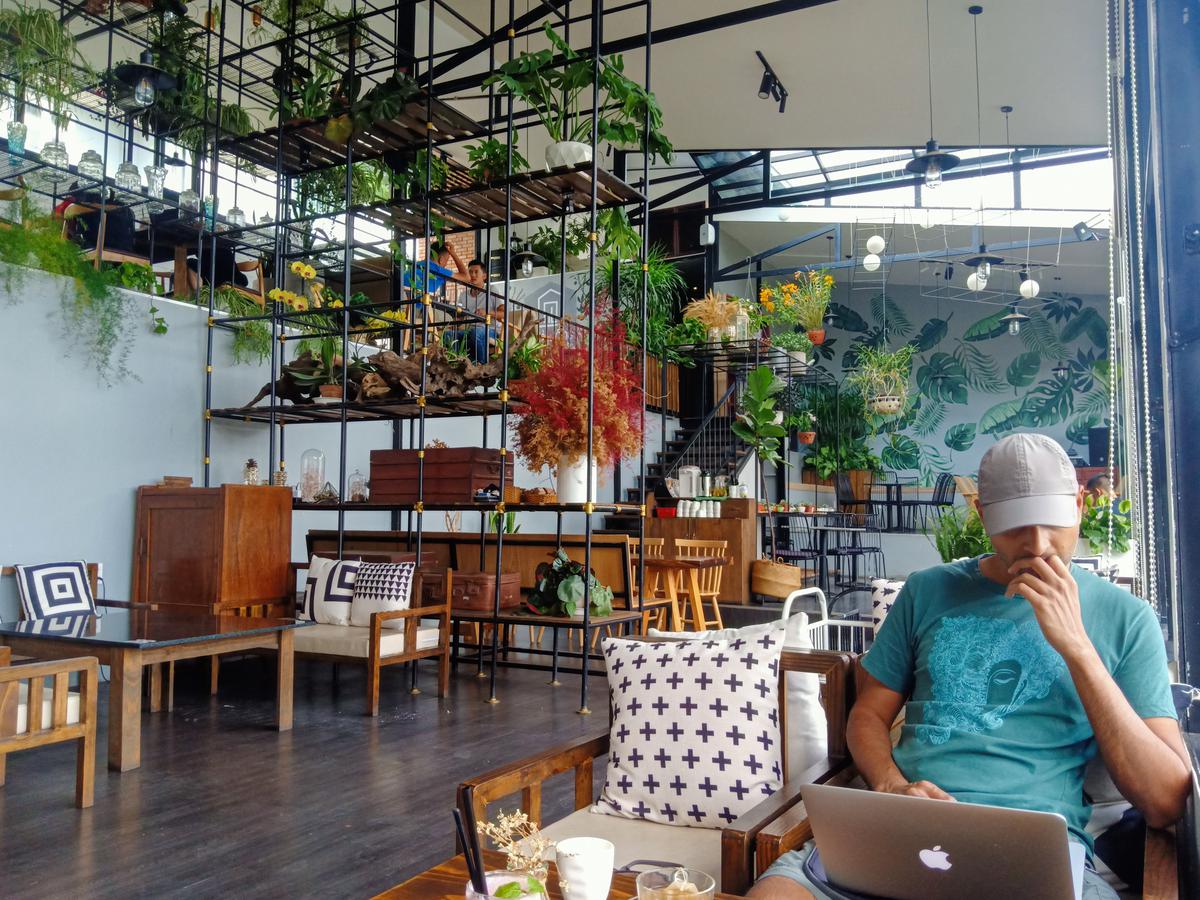
Thirumal Motati in Vietnam
Get a US visa: “It will get you free access to many countries [and it’s for 10 years]. It may get difficult to get the visa once you leave your job, so apply for it while you’re still working full time.”
Have multiple bank accounts: “Before you start travelling, get yourself two to three bank accounts and credit cards, in case any get blocked or stolen. If you can manage it, try and get bank accounts in multiple countries, or get a borderless account on WISE.” Similarly, signing up for a PayPal or Payoneer accounts can be handy.
Recommended places: Danang in Vietnam, Mexico City in Mexico, Chiang Mai in Thailand, Bali in Indonesia, Tbilisi in Georgia, and Medellín in Colombia.

Santhosh Thirumavalavan, 27
Currently in Bengaluru, and headed to Himachal Pradesh next month | @craytographer on Instagram
Thirumavalavan, a software engineer, first started venturing into cafes in Bengaluru to get a taste of working remotely. He then graduated to working hostels in Chikamagalur and Goa four years ago, before travelling to places like Bukhara in Nepal. “If you chose to travel with a laptop before the pandemic, you were part of a minority,” he says with a smiles, adding that it has become easier now to work remotely. “Being a digital nomad, there’s so much room for self-development and doing simple things like pursuing your hobbies.” For amateur digital nomads, he suggests starting small, visiting places nearby, and travelling with friends.
Keep track of your health: “When you’re on a workation it’s easy to develop bad eating habits and stay for days without proper exercise. If you’re going to take up the digital nomad lifestyle, pay attention to your health, eat simple food and maintain a physically-active lifestyle.”
Stick to a schedule: “Since you’re staying with other travellers at times, plans are made spontaneously and that can make you lose track of time. Schedule your day, block four to five hours in the morning to explore the place and get back to work.”

Santhosh Thirumavalavan
Don’t over rely on internet connectivity: “While it was easier for me to convert calls into emails and messages, if you have a call-intensive job, make sure your place of stay has good connectivity. I started carrying a dongle with me.”
Organise everything: Checkout sites like HostelWorld and Commune18. Pack your work gear separately so that you can carry it with you on day trips (to cafés, co-working spaces, shacks, etc).
Recommended places: Bir, Manali in Himachal, Vagator, Anjuna and Arambol in Goa, Varkala in Kerala, Chikmagalur in Karnataka, and Udaipur in Rajasthan
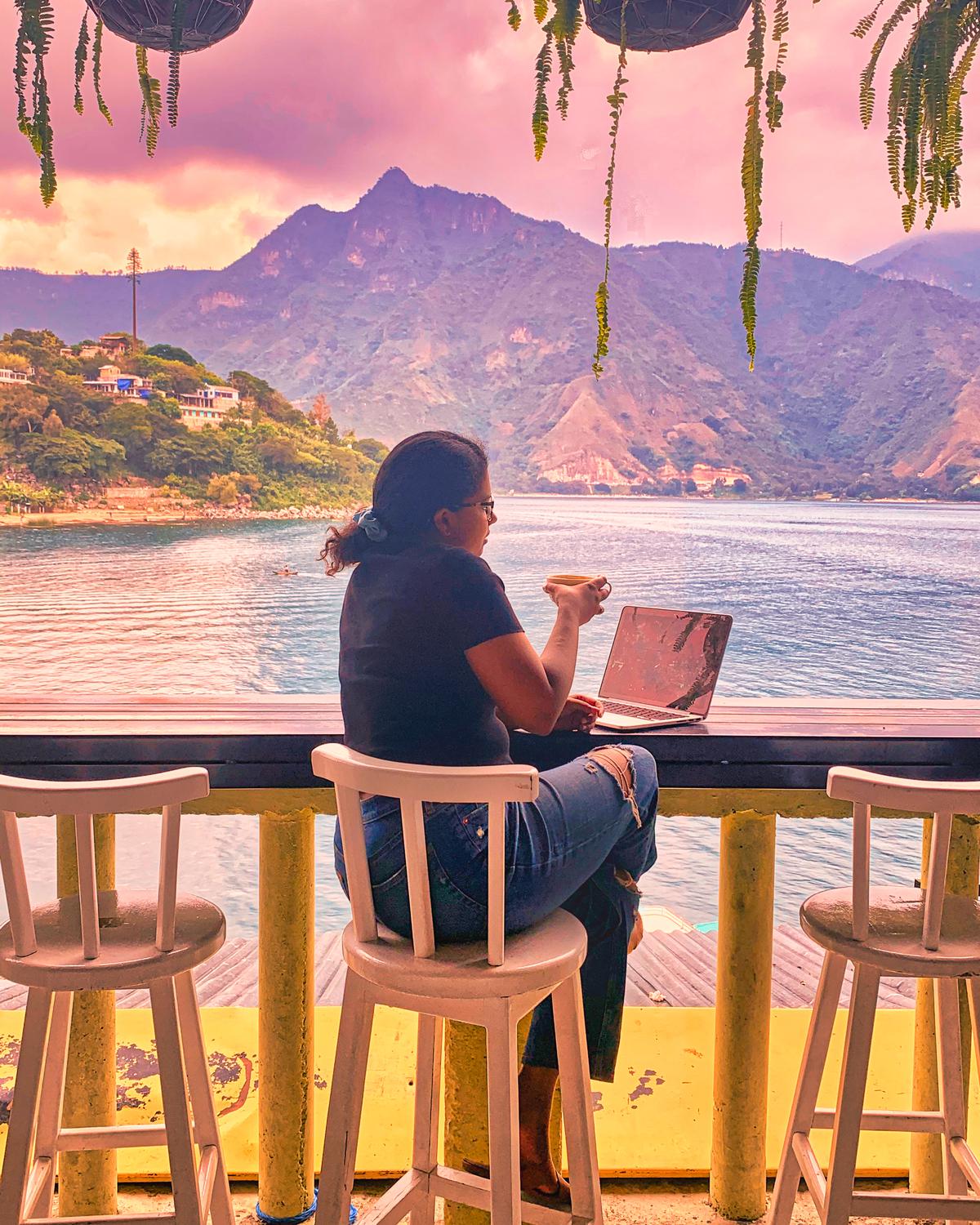
Ruchi at Lake Atitlán in Guatemala
Ruchi, 33, and Avi, 34
Currently in Mysore after working for a year out of Mexico and Guatemala | @haveasecondbreakfast on Instagram
Among the lessons the duo has picked up (the couple completes six years of travelling full-time this November), being prepared for the unexpected stands tall. For starters, the pandemic prolonged their six-month stay in Mexico to two years. Recollecting another unexpected situation, Ruchi says, “We were planning to head to Bali from Malaysia when Avi’s wallet got stolen.” But mingling with the local community helped back then. “We used to work out of this one cafe [where the wallet got stolen, incidentally]. When we told the cafe owner, he helped us — from making sure we were fed, to accompanying us to the police station,” says Avi.

Pick nomad-frequented spots: “Choose cities like Chiang Mai or Bali; it’ll make it easier for you to transition to the lifestyle.” Also, look for cafes and co-working spaces to network with other nomads and identify work opportunities.
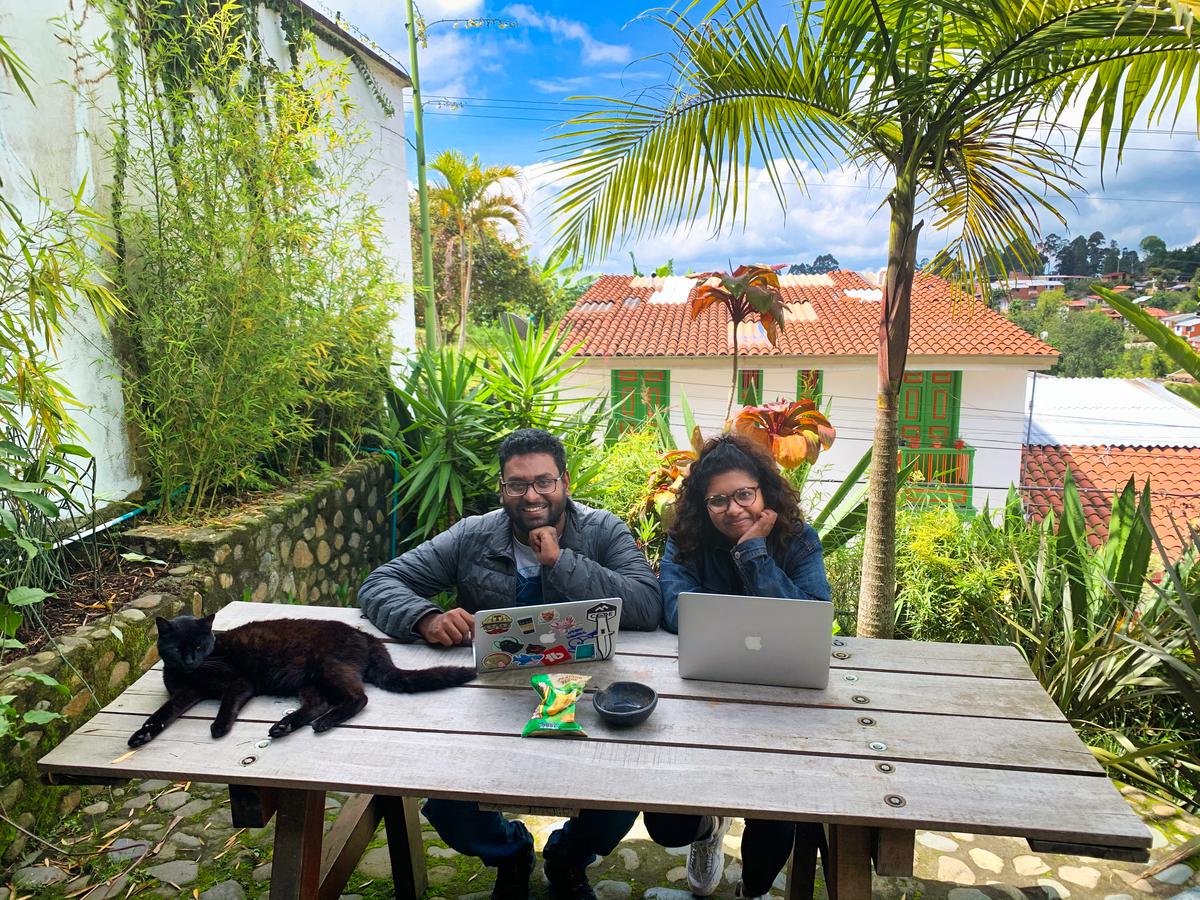
Ruchi and Avi in Salento, southern Italy
Save, save, save: “Before we started travelling full time, we gave up our apartment and did not splurge on short-term trips,” says Ruchi. “Countries in Southeast Asia like Vietnam and Thailand can be great for digital nomads because they have a vibrant cafe and co-working culture, and are easy on the pocket.”

Aakanksha Monga
Aakanksha Monga, 23
Working out of Thailand since 2022 | @aakanksha.monga on Instagram
Monga, a management consultant, took her first digital nomad trip last October to Kher, near Mussoorie. The confidence it gave her propelled her to a number of workations out of places like Bir, Goa and Mashobra — with plans to visit Dubai and Thailand next. “I feel more nourished working from home when I work from different destinations, since you have nature around you at all times,” says Monga, who begins her day early with a hike and then sits down to work close to 9.45 am. “When you’re staying in places like Himachal Pradesh or Ladakh, you can cut down on your expenses as compared to living in a city like Gurgaon. Additionally, you also get to experience slow travel, which for people with corporate jobs is a luxury.”
Get involved with the local community: “When it comes to smaller towns, they are very community driven. Taking part in whatever they do and helping them is crucial because they will go out of their way to help you.”
Choose hostels and co-working spaces: “When you go to the office, there’s human interaction. A digital nomad life takes that out of the picture, so you need to choose places with a decent social life.”
Recommended places: Naggar and Bir in Himachal Pradesh, and Goa

Brittany Sneller
| Photo Credit: @bucketlistbri
Brittany Sneller, 28
Currently in Mexico, and has travelled to more than 30 countries including Egypt, Japan, Peru, and New Zealand | @bucketlistbri on Instagram
A few years ago, Sneller stopped counting the number of countries she’s visited. “Becoming digital nomads came rather naturally for my boyfriend, Paul [Faure], and me. After graduating from college in 2015, I moved to Kathmandu, Nepal for my studies and a job, and Paul followed suit. Fast forward three years — through moving around Europe, South America, and eventually receiving my MA in Humanitarian Aid — we decided to ‘move to’ Mexico, basing ourselves in a small beach town on the west coast for six months… and by the time we went full-time nomadic in 2018, we had already been living abroad in different countries around the world,” says Sneller, adding that, post pandemic, her blog traffic “has grown beyond my imagination and I am able to earn from it full-time”. Travelling with Paul and her eight-year-old cat Yoda, she plans to overland Canada, the US, and parts of Mexico in their 1990 Roadtrek van this year. “We’re never too sure where we will be in the next six months!”
Do your research: Look into where you want to go, what the culture is like, what the community is like, and the overall lifestyle. “Being prepared before you arrive really helps to mitigate any anxiety or stress. Not to mention, you will feel safer too.”
Have an online job: “I started freelance writing on Upwork.com and would encourage you to find a job online that you can build up skill for and do from anywhere [it doesn’t have to be writing]. While you may be able to travel for a while on your savings, you’ll ultimately need to replenish your spendings.”
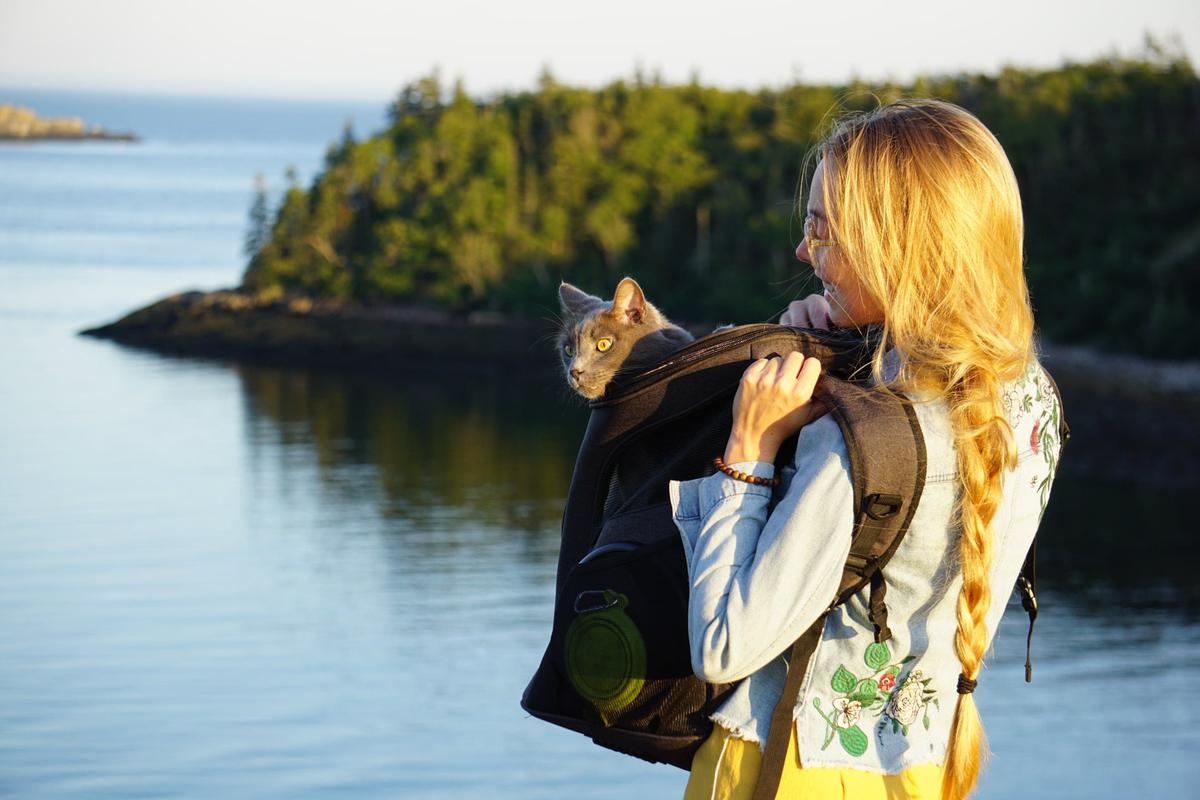
Brittany with her cat, Yoda
Work-life balance: “Paul and I have burned ourselves out trying to hustle and build our businesses. But, what’s the point of the lifestyle if you’re overworking yourself? For this reason, it’s very important as a nomad to stay on top of your health; exercise, eating well, and sleep are the first to go when there’s an imbalance, and yet, they’re the most important for sustaining the lifestyle.”
Prioritise your pet: With a pet you can’t travel just anywhere. “Many countries have strict or harsh entry requirements for importing pets, so we avoid those places. This is one reason why we ended up choosing Mexico as our semi long-term home base because it was much easier to move to with a cat than, say, Bali, Indonesia [which requires a quarantine period].” Before travelling to a new country, do vigorous research to ensure you have all the veterinary certificates and health documents required at the airport or at immigration.
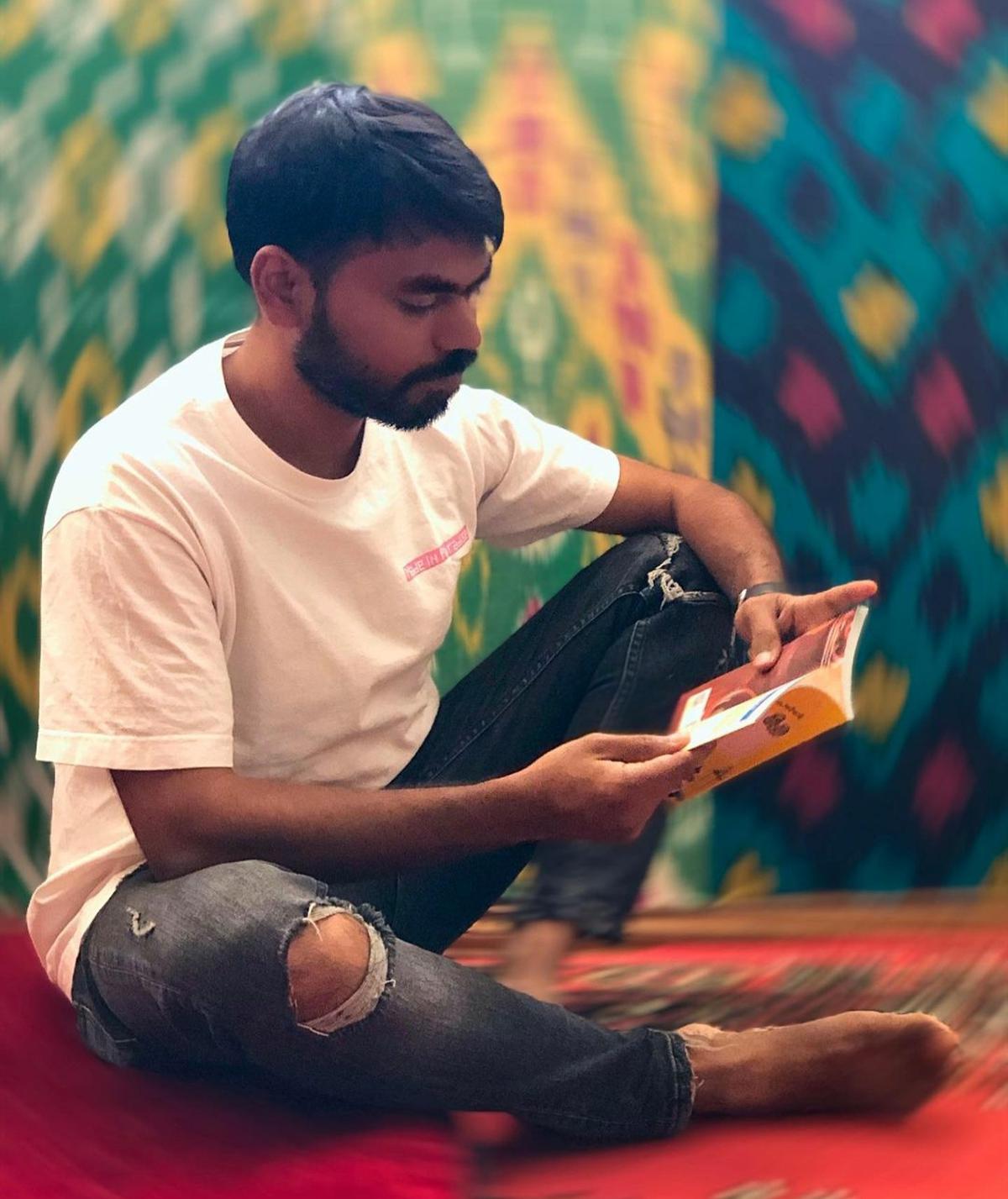
Saurav Arya
Saurav Arya, 37
Currently in Bengaluru, worked out of places like Uzbekistan and Tajikistan, and countries across Central and South America and East Africa | @indiandigitalnomad on Instagram
“It’s a very solitary lifestyle. You need to learn how to keep yourself motivated,” says Arya, who has been a digital nomad for around 11 years. He offers a 14-day Digital Nomad Bootcamp — covering everything from finding remote jobs to building passive income streams — to help aspirants seamlessly make the switch.
Get your employer on board: “Your company needs to understand the digital nomad culture and that you cannot be staring at your laptop at all times. Have a chat with your boss and get the independence to work at your own pace.”
Start a portfolio: The creator economy is on the rise and to be a pro digital nomad, it makes sense to start working on your portfolio of small bets. “Start an online bootstrapped small business based on what you are passionate about. A good way to begin would be joining a community of nomads to understand their journey, and even collaborate with them before going solo.” Try sites like WorkStays.in and Nomadlist.com.
Make the best of your Indian passport: “With visa-free entry to 22 countries and visa on arrival facility to 41 countries, India shares the 60th rank in the Global Passport Power Rank. With a valid US or Schengen visa, you can travel to quite a lot of countries.”


Harikrishnan and Lakshmi
Harikrishnan J, 32, and Lakshmi Krishna, 25
Travelled across Rajasthan, Northeast India, and Sri Lanka among other places | @tinpinstories on Instagram
The travel bug bit the newlyweds after they went to Thailand for their honeymoon in 2019. The duo started a travel blog, took a few trips to Himachal Pradesh and Karnataka, and got a few hundred views on their videos (on Instagram and YouTube) before finally deciding to quit their jobs (in edutech and graphic design). With freelancing jobs in hand, they set out in a borrowed Hyundai Creta in October 2020. “We had only planned for two months, but we ended up travelling for six!” says Krishna. They are planning to drive to Himachal soon.
Avoid expensive refurbishments: “We folded the backseat to make space to sleep. I also made an exhaust fan using the fan from my computer’s CPU and attached it to the window,” says Harikrishnan.

Ditch Google Search: Instead try Google Maps. “Once you’ve finalised your route, look it up on Maps, zoom in, and look for places to stay and visit. You’ll get a lot of good options that may be missed on search pages [because of inadequate customer reviews].”
Petrol pumps are safe bets: “We used to park our car at petrol pumps at night. We’ve even taken baths in their wash rooms!” says Krishna. “We turned off our headlights, got our beds ready before entering the pump so as not to draw too much attention. You can also try parking lots,” adds Harikrishnan.
— With inputs from Surya Praphulla Kumar
A book and a handy app





























